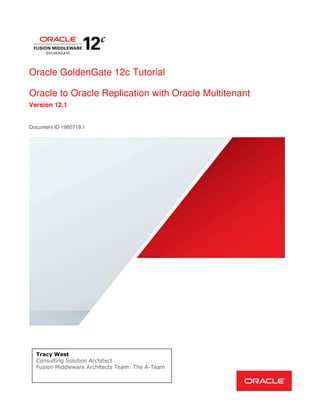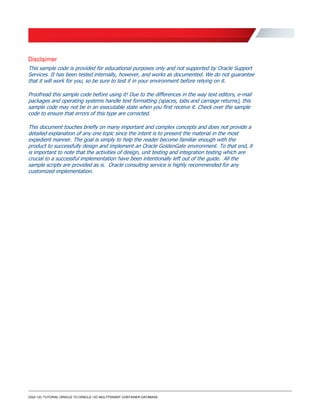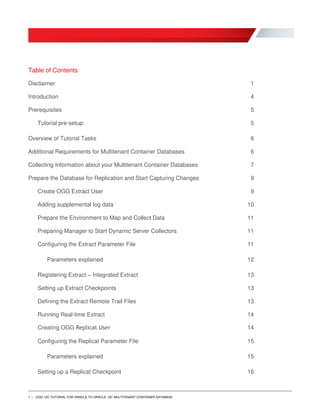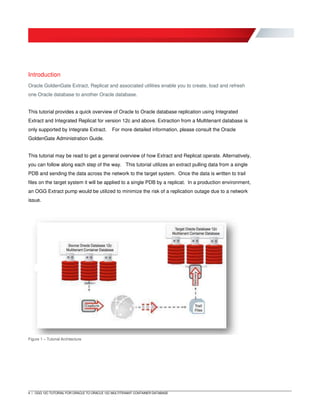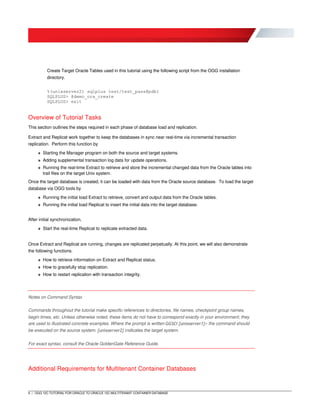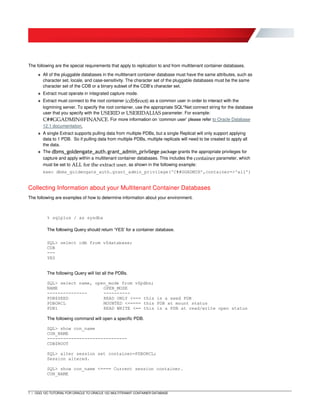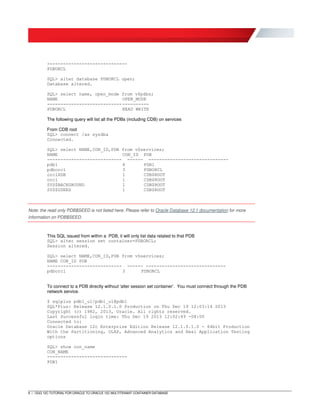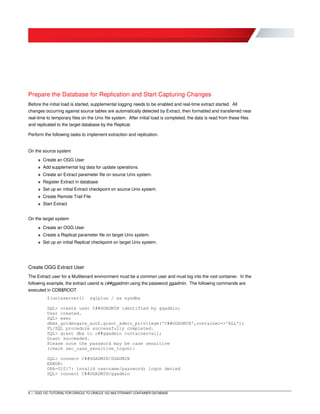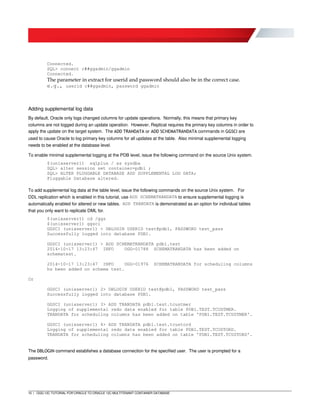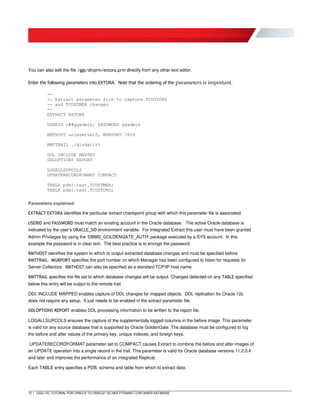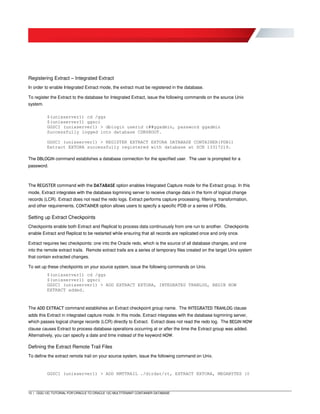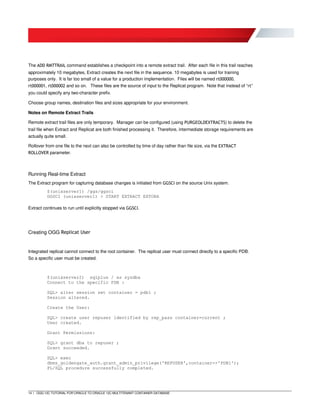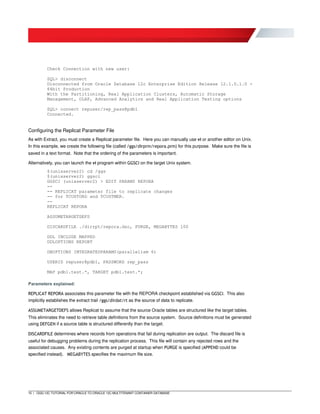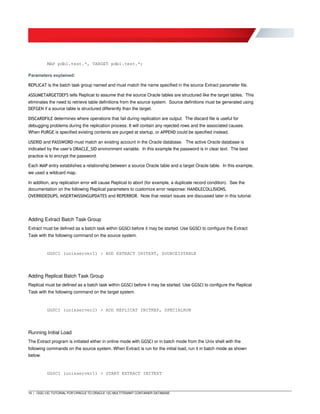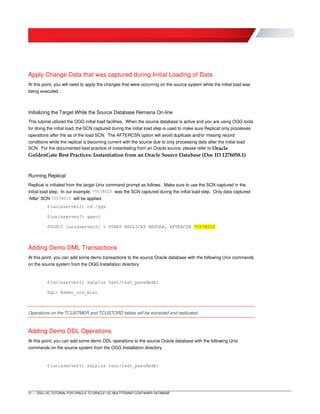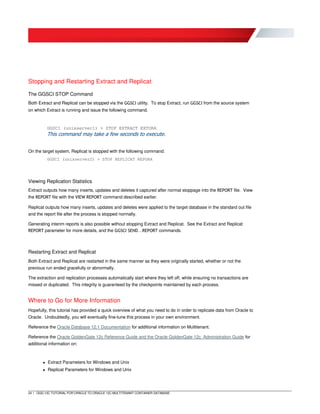This document provides instructions for replicating data from an Oracle multitenant container database (CDB) to another CDB using Oracle GoldenGate. It outlines prerequisites, tasks to prepare the databases and environment, and steps for initial load and ongoing replication of data changes in near real-time. Key steps include creating GoldenGate users, adding supplemental logging, configuring Extract and Replicat processes, and monitoring replication status. The goal is to familiarize the reader with setting up a basic Oracle to Oracle replication setup using GoldenGate in a multitenant environment.
